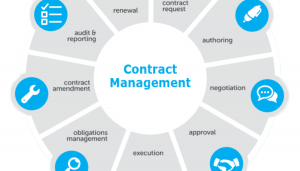
This post briefly represent the contract management use cases which could be solved using machine learning / data science. These use cases can also be termed as predictive analytics use cases. This can be useful for procurement business functions in any manufacturing companies which require to procure raw materials from different suppliers across different geographic locations. The following are some of the examples of industry where these use cases and related machine learning techniques can be useful.
- Pharmaceutical
- Airlines
- Food
- Transport
Key Analytics Questions
One must understand the business value which could be created using predictive analytics use cases listed later in this post. One must remember that one must start with questions and not the data to come up with strategic analytics use cases. So, what are some of the key analytics questions in relation to creating business value from efficient contract management:
- How can I create a contract that covers all of the important topics?
- How can I ensure that the contract does not have clauses which could result in risks?
- How can I do a fast review of contract while ensuring that contract meets all compliance standards?
- Can I know of the risky clauses in my contract?
- In case, my contracts have risky clauses, could the related stakeholders be reached automatically for their insights?
Contract Management Use Cases
Some of the following use case can help the procurement organisation adopt what may be termed as smart contract management.
- Contract risk assessment
- Contract text analysis (change in contract terms, clauses etc): Topic modelling algorithms such as LDA (Latent Dirichlet Allocation) can be used to find out key topics present in the contract. This could further be used to assess the risk in terms of whether all the topics have been covered. Contracts can also be classified in categories related to high risk, medium risk or low risk contract based upon the similarity that the contract has with similar contracts in past. Technique such as cosine similarity can be used for measuring the similarity of contract with past contracts.
- Contract processing
- Contract clause classification for anomaly detection / breach of company policies, contract optimisation and faster assessment: ML algorithms for Topic Classification such as some of the following can be used for classifying contract clauses.
- Supervised Latent Dirichlet Allocation (SLDA)
- Support Vector Machines (SVM)
- Multinomial Logistic Regression (maximum entropy)
- Naive Bayes (see also multinomial NB)
- Neural Networks.
- Decision Trees.
- Random Forests.
- Boosting and Bagging algorithms
- Contract clause recommendation for new contracts for faster processing. ML algorithms related to GAN (Generative Adversarial Network) can be used for generating the key clauses for specific types of contracts.
- Contract classification (by type, past contract documentation etc) for faster processing. The same algorithms mentioned for classifying contract clauses can be used contract classification.
- Tag cloud for contracts review
- Contract clause classification for anomaly detection / breach of company policies, contract optimisation and faster assessment: ML algorithms for Topic Classification such as some of the following can be used for classifying contract clauses.
- Contract recommendation
- Contract type recommendation in relation to futures / hedging for maximizing the savings due to commodity price volatility
Stay tuned for more detailed analysis on some of the contract management AI / machine learning use cases listed above. I will be focusing a lot on topic modelling and topic classification. Will also be demonstrating usage of different supervised learning algorithms for topic / text classification
- Coefficient of Variation in Regression Modelling: Example - November 9, 2025
- Chunking Strategies for RAG with Examples - November 2, 2025
- RAG Pipeline: 6 Steps for Creating Naive RAG App - November 1, 2025
What career opportunities do you see up for grabs, when a contract management professional upskills with Data Science? I mean do you see a significant demand of such combined skills of construction project management, contract management and Data Science skills???
Thanks Prateek for your question. A contract management professional upskilling with data science could get opportunities to work in different use cases relating to question and answering, text summarization, semantic search etc from contract documents. This would help in legal field and other related fields where documents need to be processed.